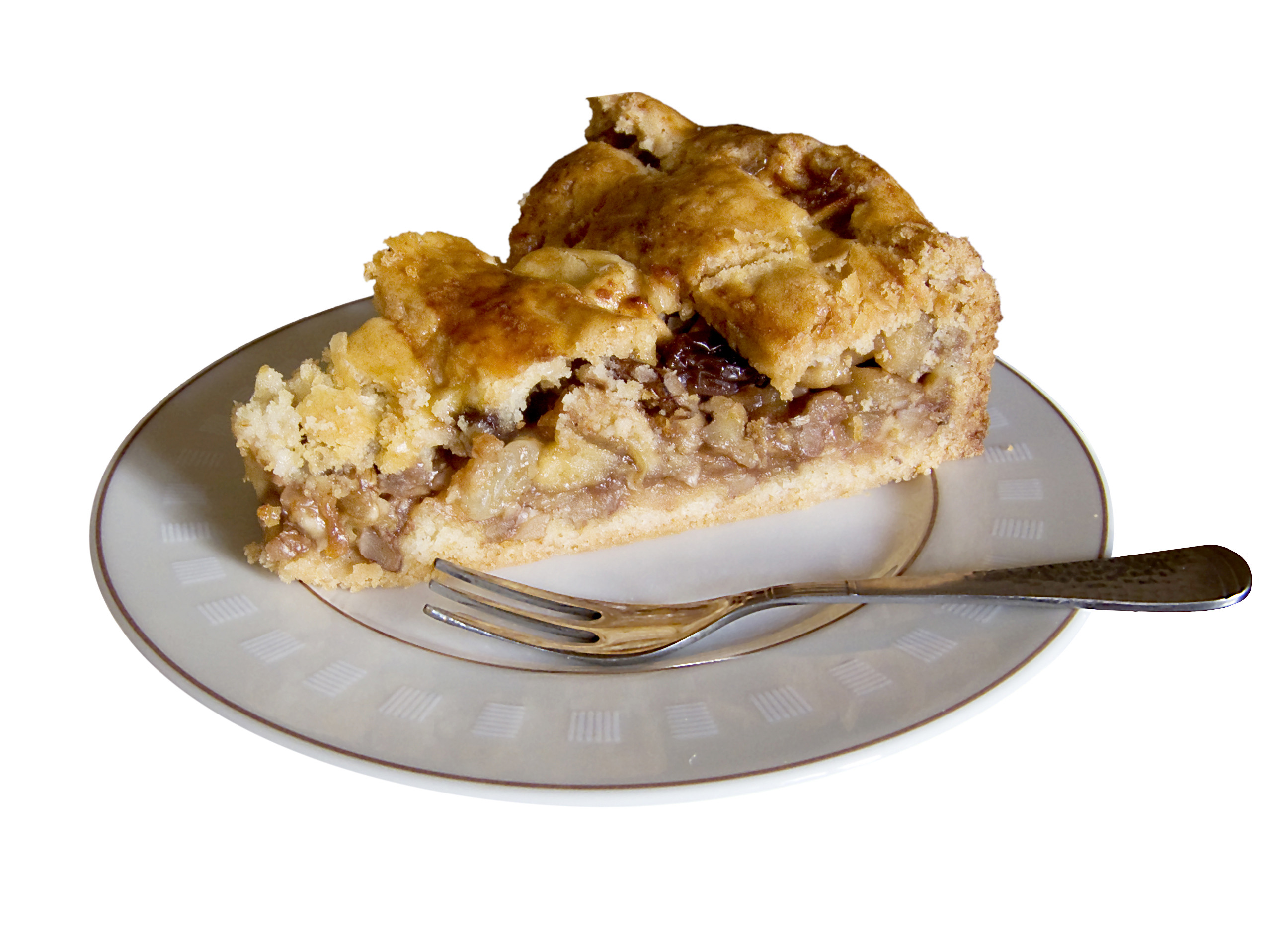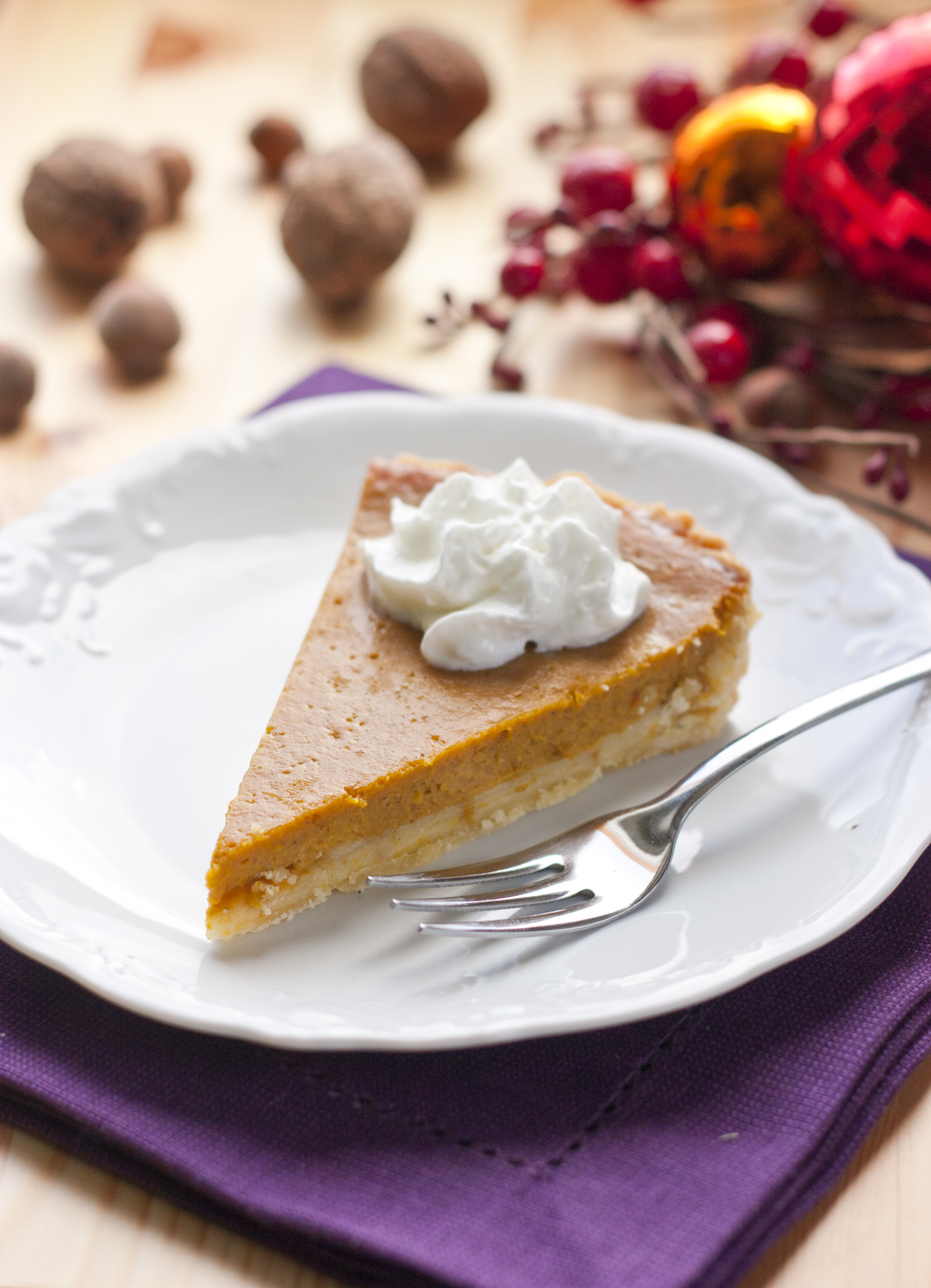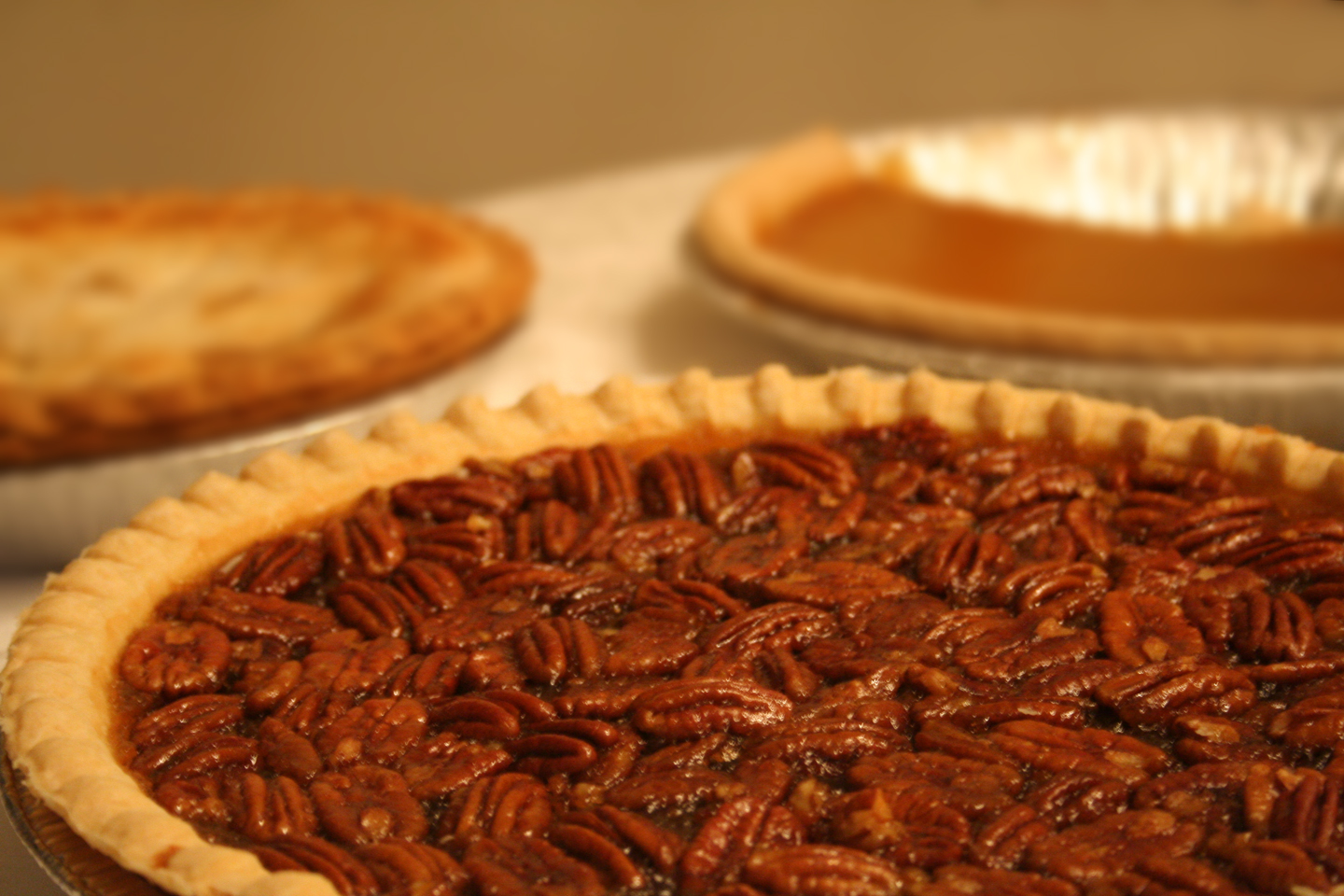When it comes to dessert on Thanksgiving Day, everyone has his or her favorite type of pie. You start eying the sweet treats before dinner and strategize which flavor (or flavors!) you will save room for.
And while less traditional pies such as chocolate, coconut cream, blueberry, raspberry, and lemon chiffon—even cheesecake and crostata—are enjoyed on Thanksgiving, four traditional standards still take center-stage when it comes to Thanksgiving desserts: pumpkin, apple, mincemeat, and pecan.

Pumpkin Pie
The quintessential symbol of harvest time and autumn is the pumpkin. It’s carved into jack-o’-lanterns for Halloween used throughout fall as decor and made into creamy, delicious pies for Thanksgiving. Native to North America, it’s as American as Thanksgiving itself.
Not all pumpkins are created equal, however. That same big, unwieldy pumpkin your child picks out to carve the perfect jack-o’-lantern won’t make for the perfect pumpkin pie. “Pie pumpkins” or “sugar pumpkins” are much smaller—about 6 to 8 inches across and weighing about 4 pounds.
Halved and then heated (after removing the seeds and stringy pulp), the softened flesh is scooped out then pureed. This is then mixed with eggs, sugar, condensed or evaporated milk, and spices such as cinnamon, nutmeg, ginger, and allspice to create the custardy pie filling.
Chocolate and maple are sometimes added as variations on the standard pumpkin pie recipe. And somewhat similar pies can also be made using sweet potatoes or other squash varieties.

Apple Pie
Probably the most versatile and customizable of all the traditional Thanksgiving pies is apple pie. From the spices and sweeteners used, to the type of apple, to the style of top crust, everyone has their own favorite type of apple pie.
Culinary apples or cooking apples are most often used for pies. These apples tend to be tart and can, therefore, provide a nice counterpoint to the sugar in the pie and won’t render a pie that’s too sweet. They also tend to have a crisper, firmer flesh that lends a nice bite to pies and won’t cook down to mush during baking. Varieties of cooking apples often used in pies include Empire, Granny Smith, Jonathan, Northern Spy, and many more.
The top crust on a pie is just as important as the variety of apple chosen. A full layer of pie crust can be used on top of the apple filling and can be perforated with a pretty, seasonal decoration for a whimsical touch. A traditional option is a lattice, in which strips of crust are woven together to top the pie. And finally, a crumb topping consisting of butter, sugar or brown sugar, flour, and salt can be used in lieu of a crust. A variation of this is a “Dutch apple pie” with a streusel topping.
In addition to apples and sugar, other apple pie ingredients can include spices such as cinnamon, cloves, nutmeg, and allspice. Variations can include the addition of other fruits such as raisins, pears, or raspberries.
And to further customize this dessert, apple pie can be served à la mode with vanilla ice cream alongside or can be topped with a slice of sharp cheddar cheese.

Mincemeat Pie
To the uninitiated, mincemeat pie might sound less like a dessert and more like a hand-held lunch made from yesterday’s leftovers. Contrary to its name, though, modern-day mincemeat pies usually contain no meat and are a delicious, fruit-filled treat.
In recipes dating back to 15th-century England, meat and fruit were used together in pies. With the addition of spirits, spices, and sugar, these pies probably had a chutney-like flavor profile. In Victorian times, this type of pie began to be associated as a Christmastime dessert. Eventually, actual meat as an ingredient was dropped. Although an animal fat such as suet or lard was still used—and can still be used to this day—as an ingredient. However, nowadays, mincemeat pies are often made without any such ingredients and butter or vegetable shortening is used instead.
Mincemeat pies today usually consist of a finely chopped or minced mixture of dried fruits such as raisins, dates, figs, prunes, golden raisins, cherries, or currants; fresh apples; and citrus zest or candied peel. Additionally, they usually include spirits such as brandy or rum and spices such as nutmeg, allspice, cinnamon, ginger, and clove.
Pecan Pie
The two main ingredients of pecan pie are pecans and corn syrup. Molasses or brown sugar are also commonly used. Chocolate, maple, and bourbon are ingredient variations seen regularly. This incredibly rich and sticky-sweet treat is most often associated with Thanksgiving and Christmas celebrations and is particularly associated with Southern cooking.
Pecans are grown in the south-central United States, with the leading producer being Georgia. The pecan tree is the state tree of Texas and pecan festivals are held annually in Kentucky, North Carolina, Louisiana, and Texas. The nuts are usually harvested each year in mid-October, which is perfect timing to enjoy at Thanksgiving. This specialty of Southern cuisine is enjoyed nationwide on this November holiday.
And although most people can agree that crunchy, gooey pecan pie is delectable, what they can’t necessarily agree on is how it’s pronounced. Go on, ask your friends how they pronounce “pecan,” and whether they pronounce it the same when it’s paired with the word “pie.” It’ll make for some lively Thanksgiving table conversation, for sure.

What’s your favorite Thanksgiving pie? Is it something traditional, a variation on one of the traditional pies, or something else altogether? Who makes the pies at your Thanksgiving dinner? Do you try new recipes or stick with old family recipes? And finally—is it “PEE-can,” “peh-KAHN,” “PEH-kahn,” or “PEH-can”?



Leave Your Response